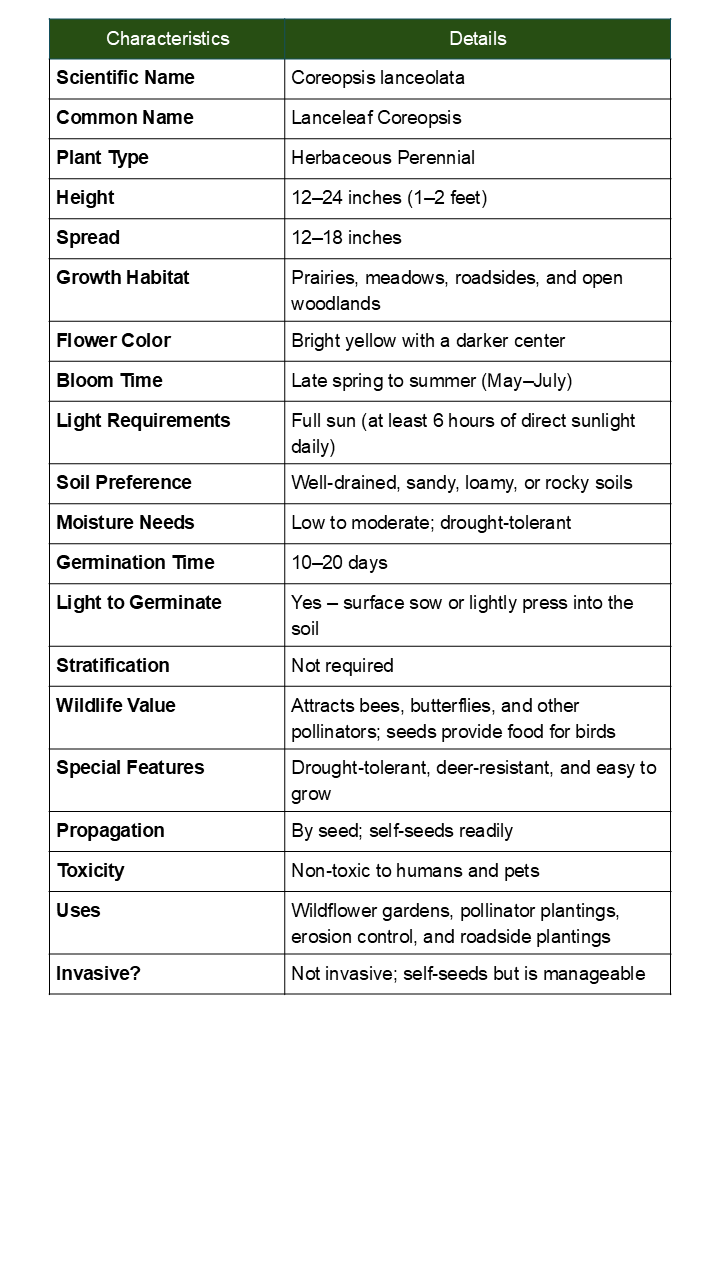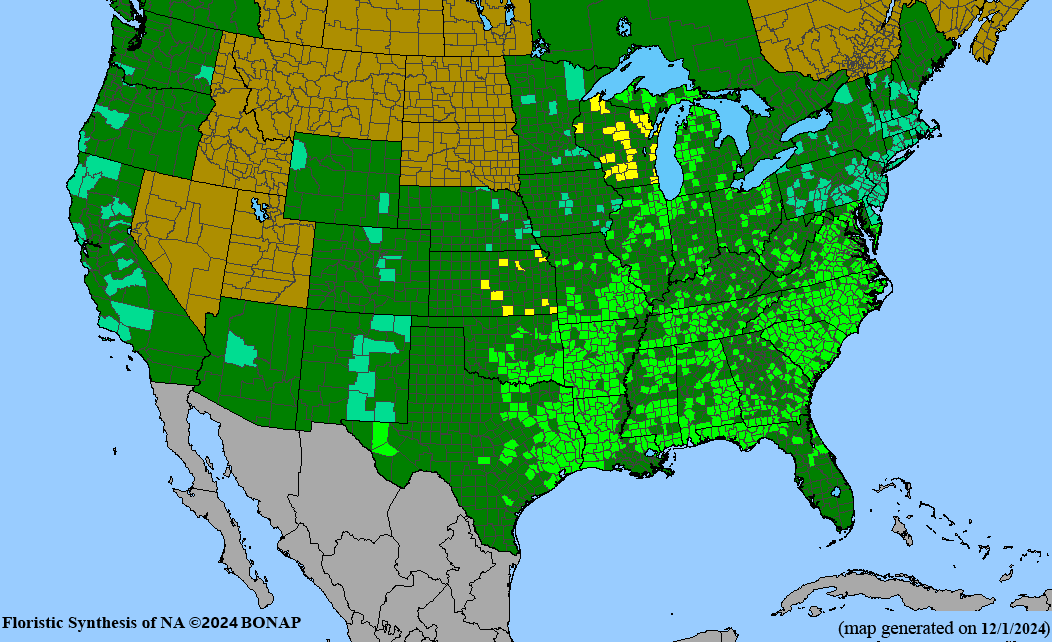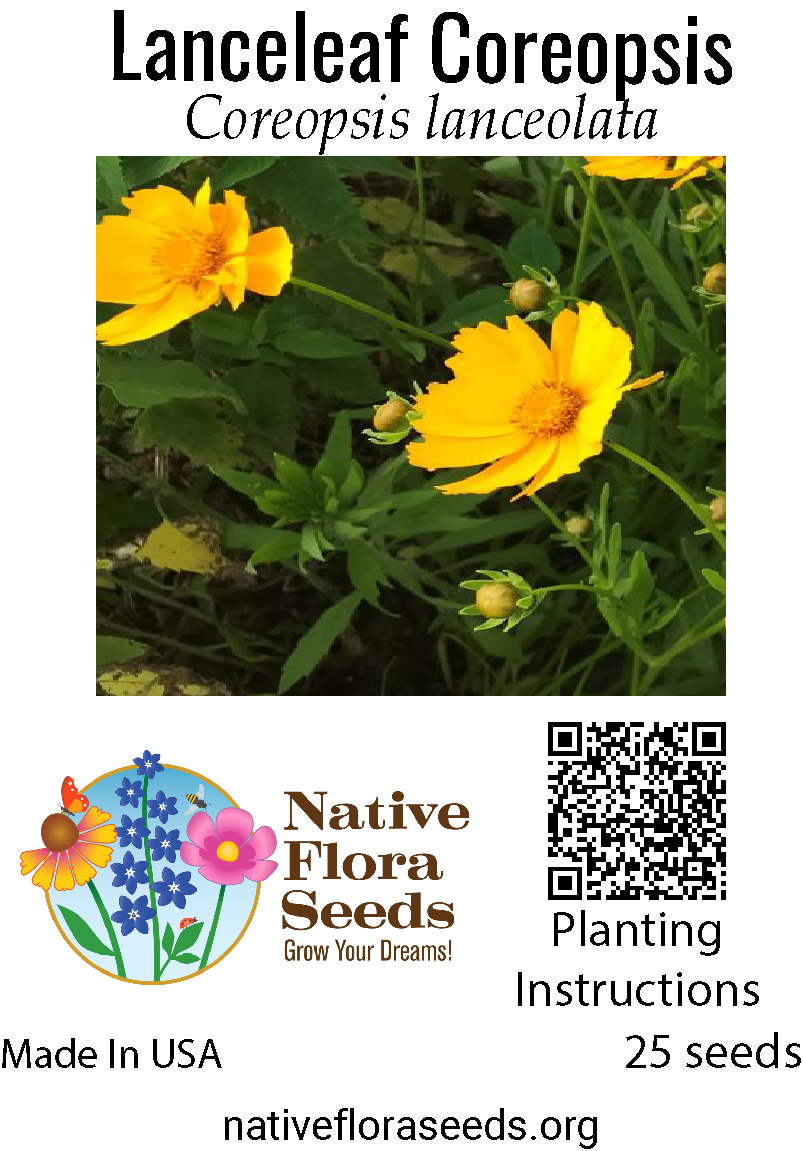Lanceleaf Coreopsis Seeds - Premium Coreopsis lanceolata for Long-Blooming Gardens
Regular price$4.00
/
Tax included.
No reviews
Golden Beauty for Endless Blooms - Lanceleaf Coreopsis
Lanceleaf Coreopsis (Coreopsis lanceolata) is a cheerful native perennial that delivers months of bright golden-yellow blooms with minimal care. This reliable wildflower is beloved by gardeners for its exceptional drought tolerance, long flowering season, and ability to attract beneficial pollinators while requiring virtually no maintenance.
🌻 Key Benefits:
- Extended Bloom Period: Flowers continuously from late spring through fall
- Drought Champion: Thrives with minimal water once established
- Pollinator Favorite: Attracts butterflies, bees, and beneficial insects
- Self-Seeding: Naturalizes easily, creating expanding colonies
- Cut Flower Excellence: Long-lasting blooms perfect for bouquets
- Deer Resistant: Natural compounds deter browsing animals
🌱 Plant Characteristics:
- Height: 1-2 feet tall, 1-2 feet wide
- Bloom Time: Late spring through fall
- Flowers: Bright golden-yellow daisy-like blooms, 2 inches across
- Foliage: Lance-shaped leaves arranged oppositely on stems
- Light: Full sun to partial shade
- Soil: Well-draining, adaptable to poor soils
- Zones: 3-9
🎯 Perfect For:
- Cottage and wildflower gardens
- Xeriscaping and drought-tolerant landscapes
- Pollinator habitat creation
- Cut flower and bouquet gardens
- Naturalized meadows and prairies
- Beginner gardens (extremely easy to grow)
Growing Tips: Direct sow in fall or early spring. Seeds germinate easily in cool weather. Deadhead spent blooms to encourage continuous flowering, or leave some to self-seed.
Each packet contains fresh, viable seeds with detailed growing instructions. Sustainably sourced from native North American populations.
FREE SHIPPING WITHIN USA



